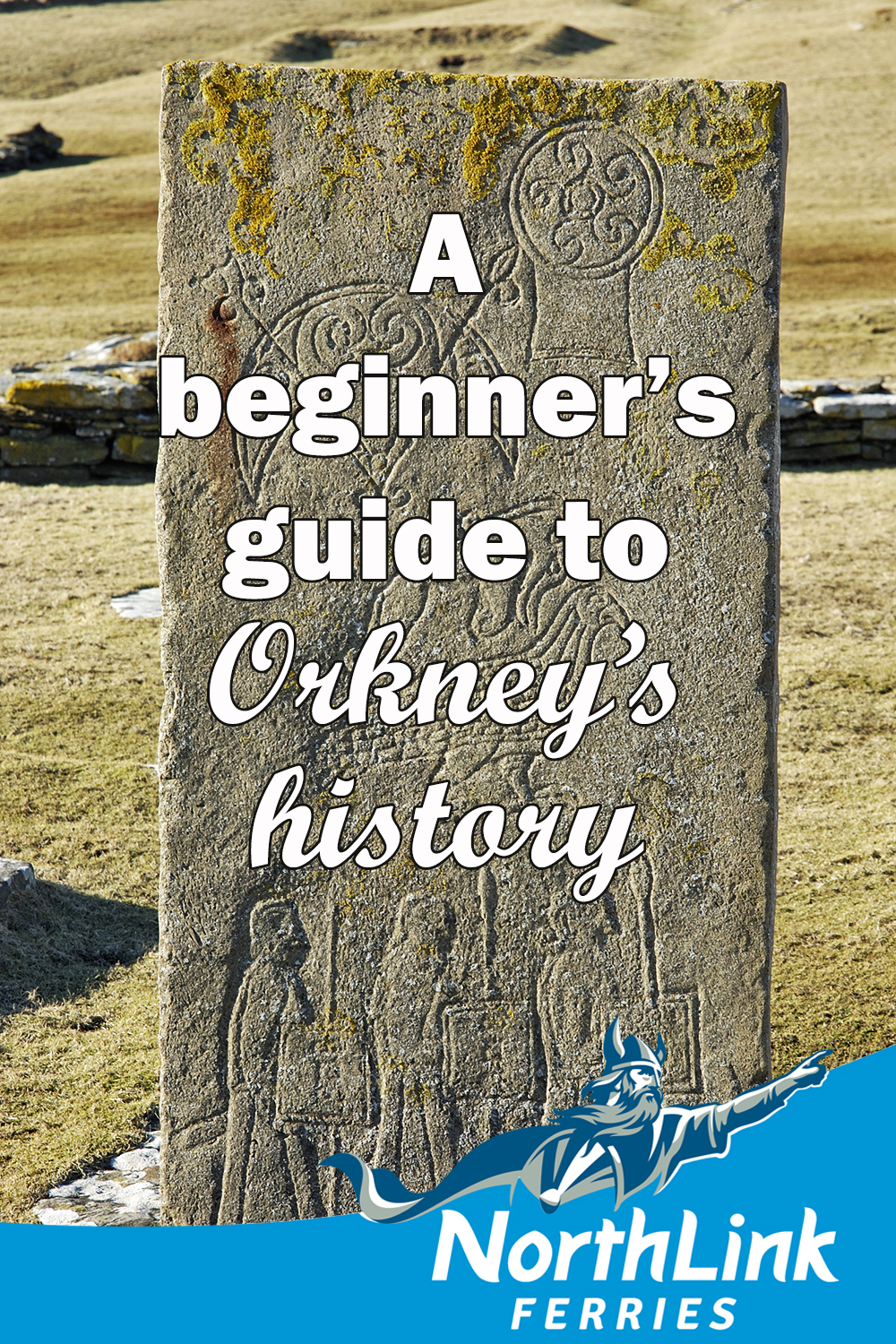A beginner’s guide to Orkney’s history
George Mackay Brown once wrote, “The Orkney imagination is haunted by time” and sure enough, everywhere you go in these northern isles, you will be surrounded by history, from the ancient to the more modern. The islands have been inhabited for a very long time.
From 800 AD, the Norse ruled over Orkney and Shetland for more than 600 years, recording its history in sagas, and their influence, in place names and people’s names is still evident to this day.
Out in the landscape, you’ll see standing stones that were carefully placed there by islanders in 3,000BC. Standing proud on Kirkwall’s skyline, and built when the Norse ruled the islands, there is the Cathedral dedicated to St Magnus. In the sea around the south isles you’ll see the remains of battleships breaking the water’s surface – sunken rusting hulks from World War II.
To help you make sense of it all, we’ve compiled this beginner’s guide to Orkney’s historic past!
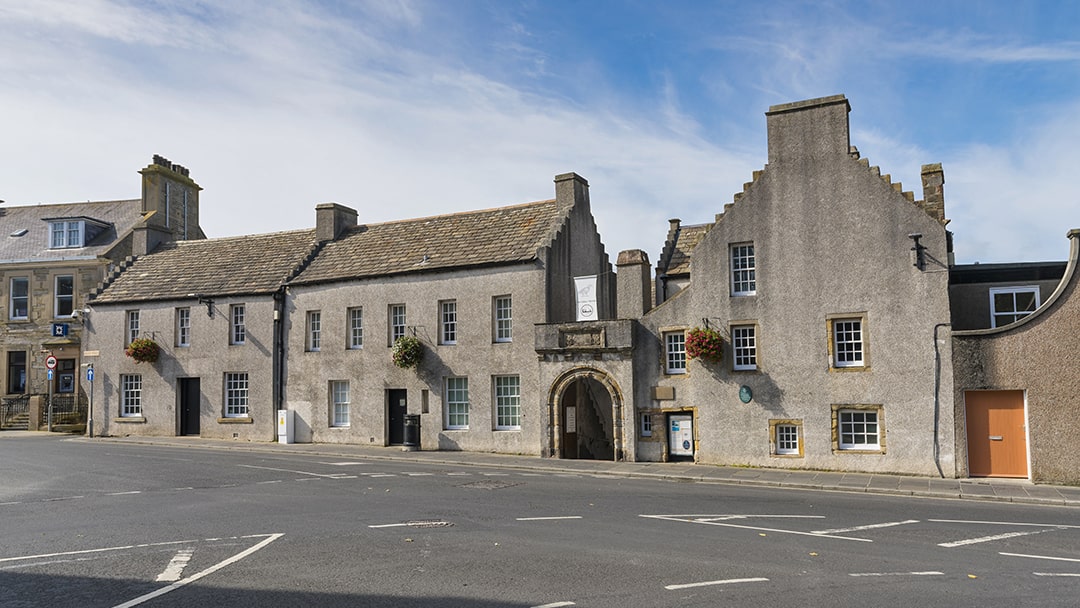
Mesolithic (7,000 years ago)
Around the end of the last Ice Age, 13,000 years ago, Mesolithic nomadic hunter gatherers arrived in Scotland. Small flint fragments found on dark Orkney moorlands indicate that a resourceful and skilled community had arrived in the islands around 7,000 years ago.
Places to visit: Orkney Museum (to view Mesolithic blades and points).
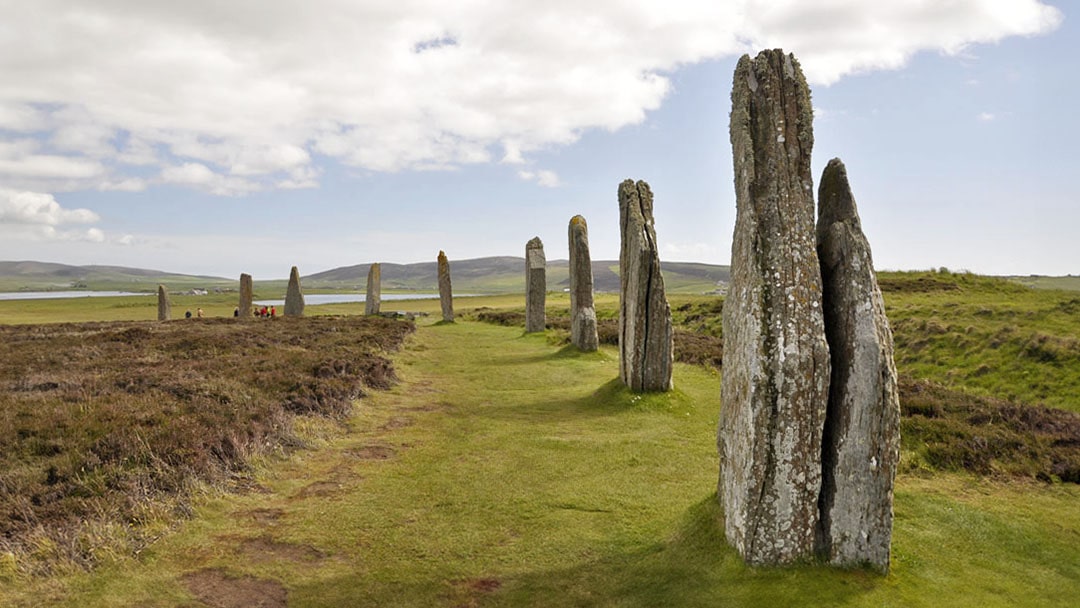
The Neolithic (5,000 years ago)
Around 5,000 years ago, Neolithic people constructed large communal villages like Skara Brae, and communal burial tombs, such as Maeshowe. They kept domesticated animals, fished the sea, and cultivated plants. They constructed beautiful and mysterious monuments, like the Ring of Brodgar, the Standing Stones of Stenness and the Ness of Brodgar.
Places to visit: Skara Brae in Sandwick, Unstan Cairn and Maeshowe in Stenness, the Standing Stones of Stenness, the Ring of Brodgar in Stenness, and the Knap of Howar in Papa Westray.
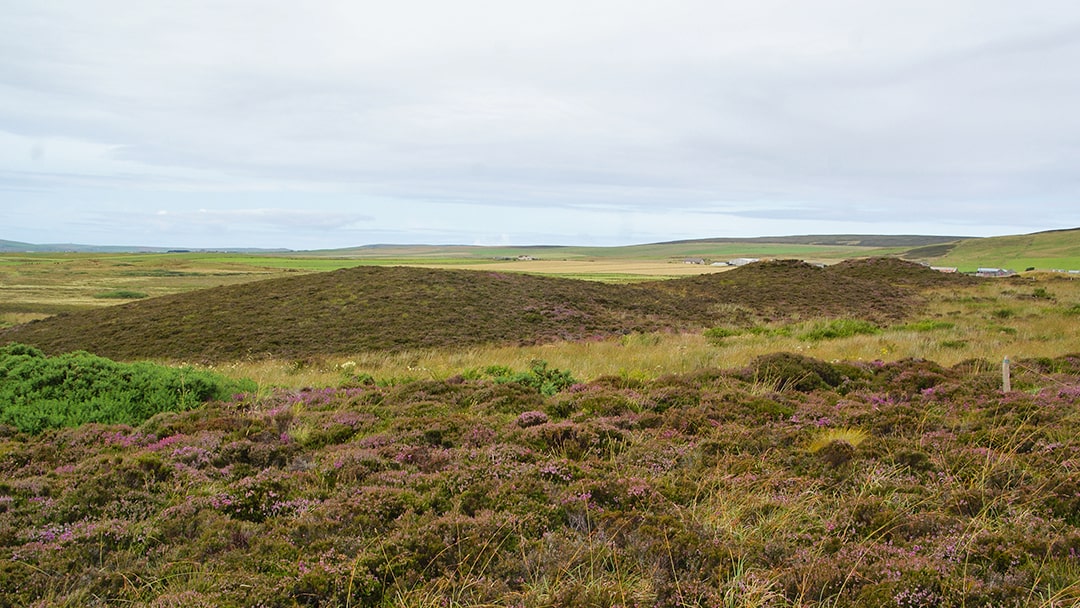
Bronze Age (4,000 years ago)
Bronze is an alloy of copper, which Orkney has little of, so the islands did not enjoy the new technology of the Bronze Age. However, Orkney continued to prosper, judging by the treasures found at the Knowes of Trotty – a Bronze Age grave site. A move from living communally to a more independent lifestyle accompanied the Bronze Age. Houses were smaller and individual graves were used instead of communal tombs.
Places to visit: The Knowes of Trotty in Harray and Liddle Burnt Mound in South Ronaldsay.
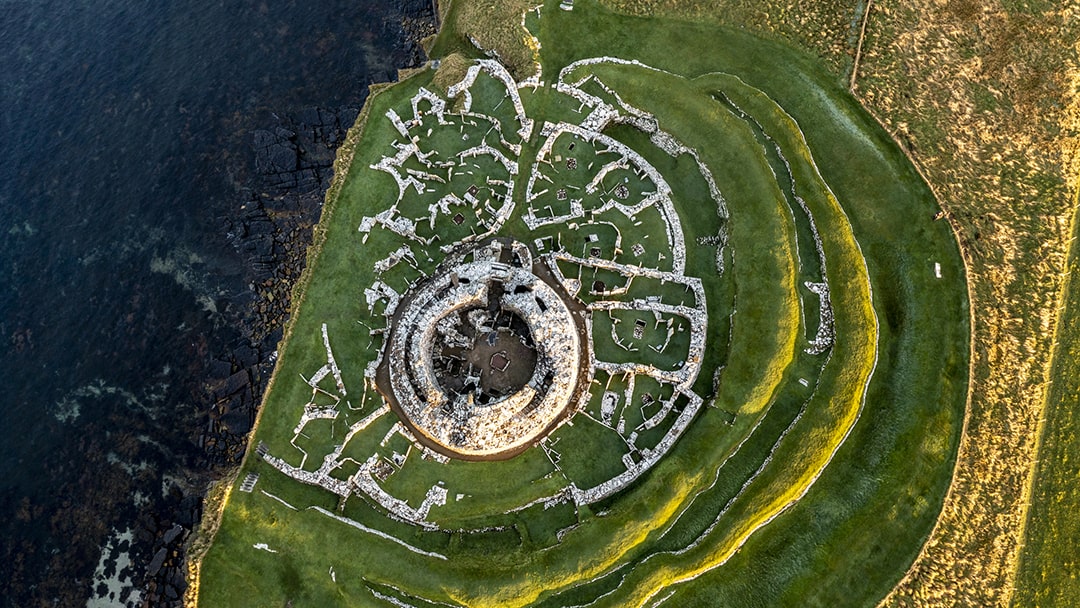
Iron Age (3,000 years ago)
With the Iron Age came a new metal which could cut down trees, build powerful weapons, better ships and stronger ploughs. Warrior chiefs began to accumulate wealth and power and built the Iron Age brochs which are scattered on the islands’ coast. These privative castles were large, round and thick-walled – impressive status symbols.
Places to visit: The Broch of Gurness in Evie, The Broch of Midhowe in Rousay.
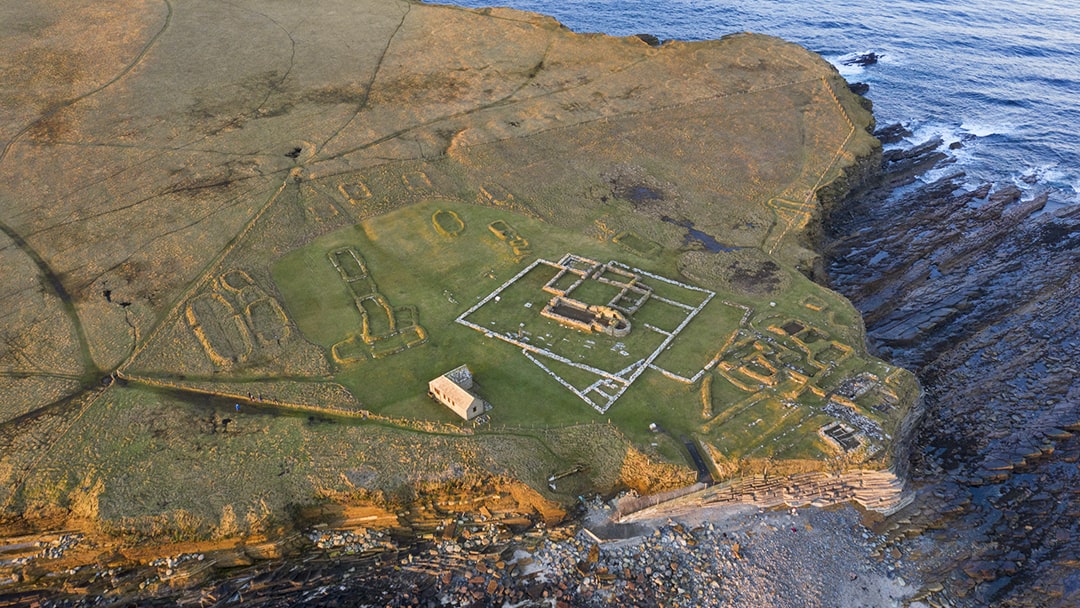
The Picts (2,000 years ago)
Very little is known of the Picts. Latin for “painted people” they were first encountered in Scotland by the Romans in 297 AD and disappeared from history after 843 AD. The Picts left their mark on Orkney though, in the form of delicate silver jewellery, and beautiful carved stones with intricate patterns, and depictions of animals and priests.
Places to visit: The Pictish settlement at the Brough of Birsay, St Boniface Kirk in Papa Westray.
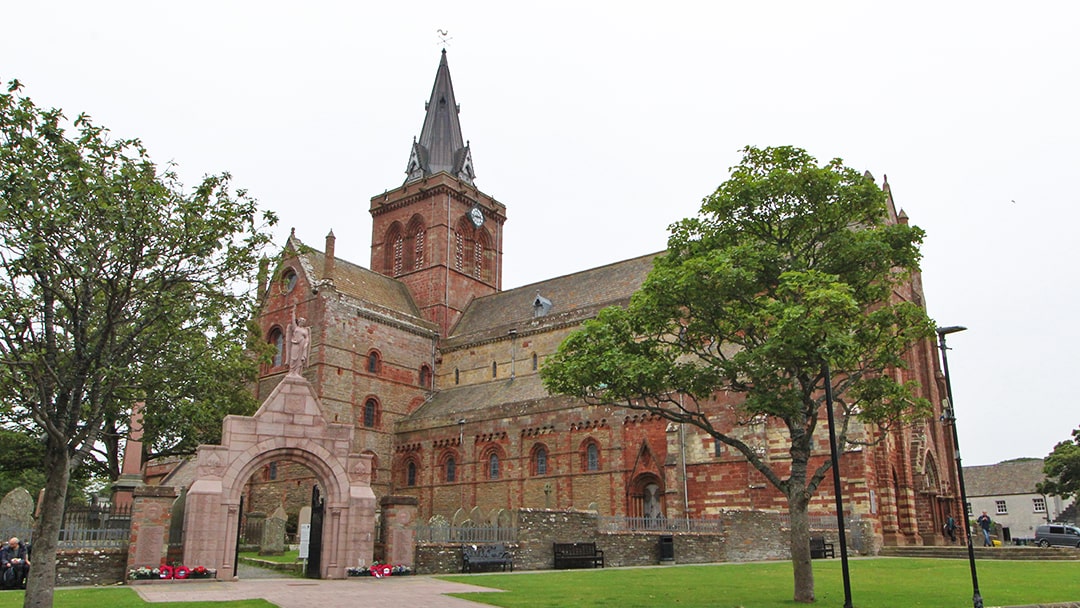
Norse Earls (800 AD)
We imagine the Norse incursion into Orkney to be the violent arrival of Vikings from the sea, but perhaps it was a trickle instead – a slow arrival of settlers from Norway, who brought with them new ways of fishing, farming, building, and speaking. The Norse ruled over Orkney and Shetland for more than 600 years, recording its history in sagas, and their influence, in place names and people’s names is still evident to this day.
Places to visit: St Magnus Cathedral in Kirkwall, Cubbie Roo’s Castle in Wyre, Runic inscriptions in Maeshowe.
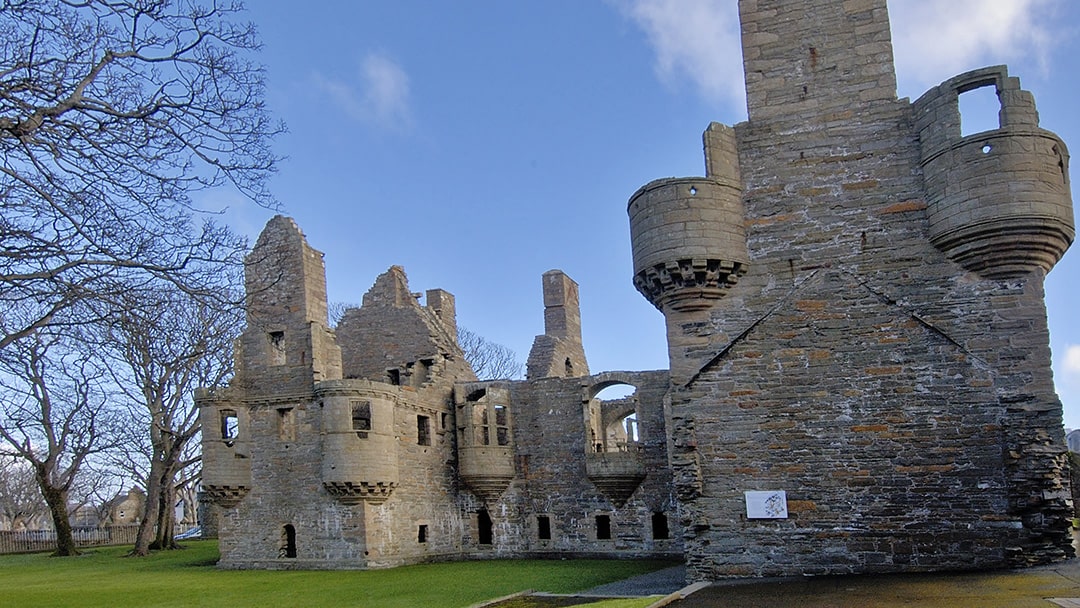
Scottish Earls (1400 AD)
After Orkney and Shetland were gifted to Scotland as part of a wedding dowry in 1468, the islands were not viewed as very important. There would be one or two clashes with Orkney rebels and Scottish rulers (the Battle of Summerdale, and the siege of St Magnus Cathedral). Tyrannical Scottish earls such as Patrick Stewart would exploit the islanders, and build impressive palaces in the islands.
Places to visit: Bishop’s Palace and Earl’s Palace in Kirkwall, Earl’s Palace in Birsay, Noltland Castle Westray.
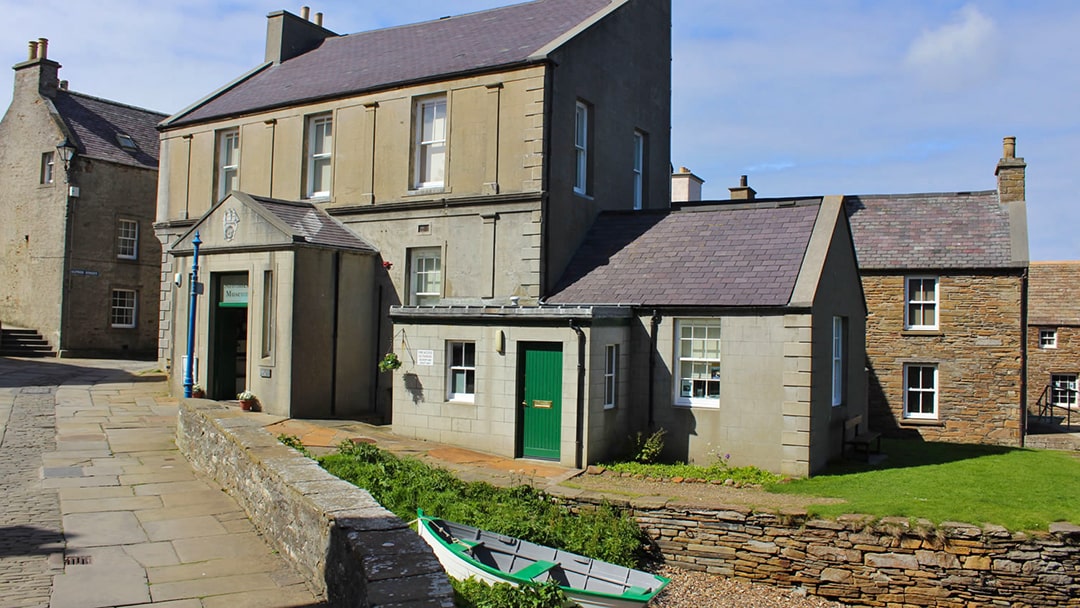
Stromness, the New World and Arctic Whalers (1700 AD)
Between 1688 and 1815, Britain was often involved in wars with France which made the English Channel unsafe. To avoid this route, ships bound for America and Canada would sail north, making one last stop in Stromness to take on provisions. Stromness grew rapidly, and Orkneymen, known for being hard-working and skilled at sea, went to work in Canada and on whaling ships.
Places to visit: Stromness Museum, the Pier Arts Centre (once occupied by the Hudson’s Bay Company Agent).
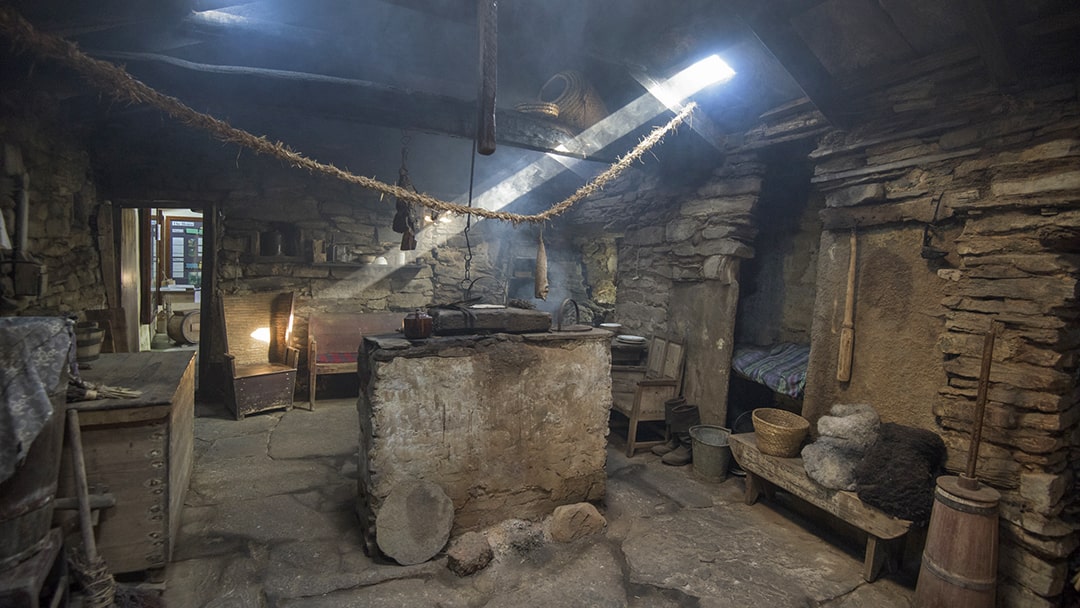
Farming improvements and the Herring Boom (1800 AD)
The 18th and 19th century saw farming improvements change Orcadian lives for the better. Steam power brought about improved sea transport between the Scottish Mainland and Orkney. In the early 19th century, the herring boom saw scores of fishermen, herring lasses with flashing knives, and shoals of boats arriving in Orkney. New houses and piers were built in Stronsay and other islands.
Places to visit: Kirbuster Farm Museum in Birsay, Whitehall village in Stronsay (once the biggest herring port in Orkney).
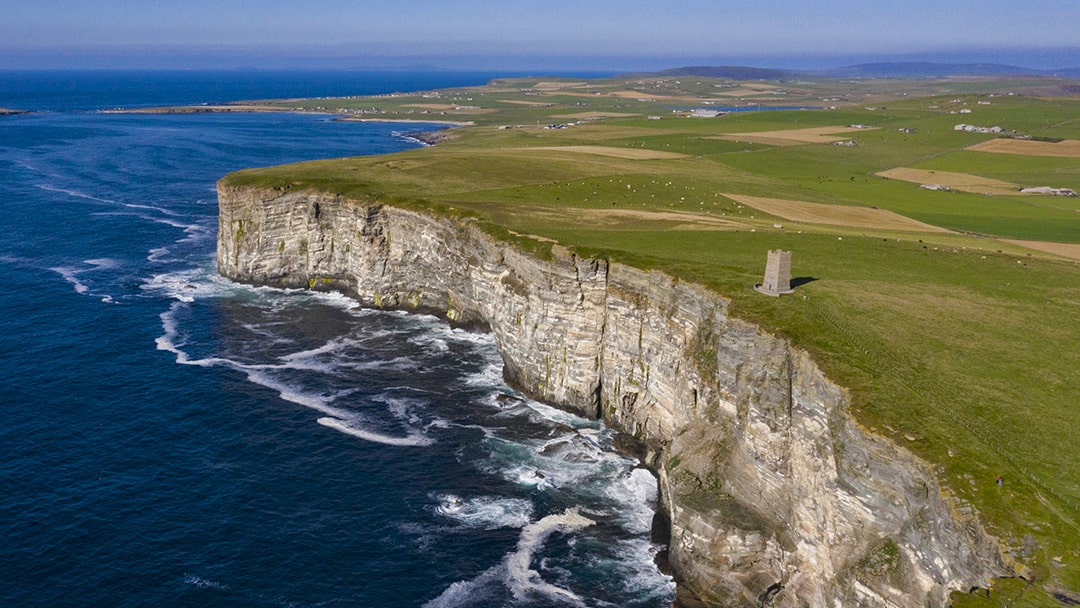
Orkney in Wartime (1900 AD)
Orkney was at the centre of operations during World War I and II. With the large natural harbour of Scapa Flow out of easy reach for enemy planes, it became the base for the British Navy and had to be defended. At the end of World War I the German Fleet were interned in Scapa Flow until they deliberately sunk their own ships. In World War II, further defences for Scapa Flow were built – the Churchill Barriers. The work was helped in no small part by Italian Prisoners of War, who also constructed the lovely Italian Chapel.
Places to visit: Kitchener’s Memorial at Marwick Head, the Italian Chapel on Lamb Holm and Churchill Barriers, Ness Battery in Stromness.
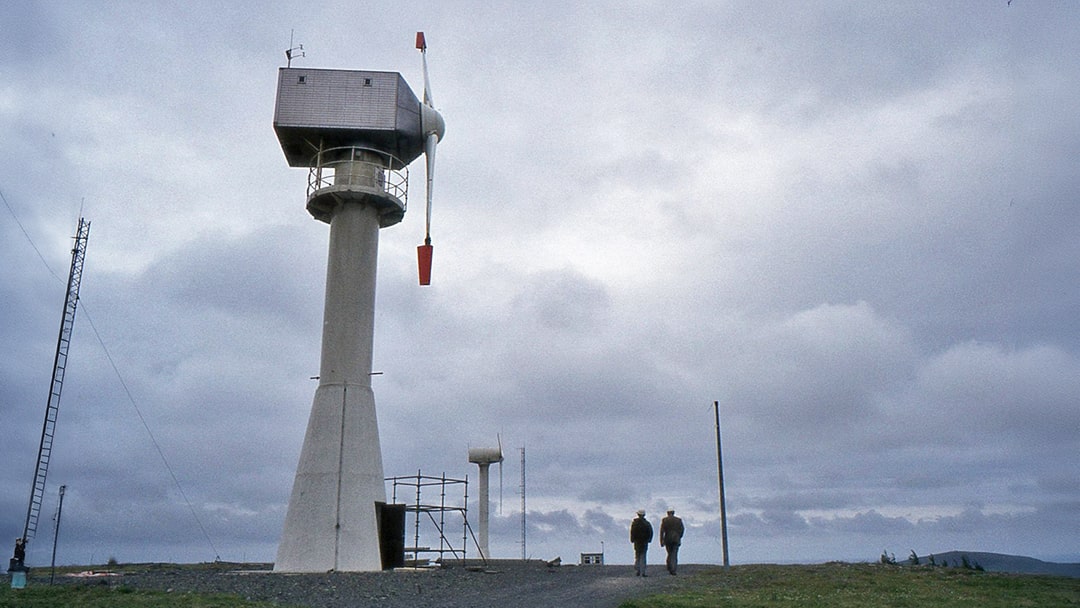
North Sea Oil and Renewable Energy (2000 AD)
Following the discovery of North Sea Oil in the late 1960s, an oil terminal was built on the island of Flotta. The facility receives oil by pipeline, and removes impurities and gases before pumping it into waiting tankers. The Flotta Flare can be seen burning for miles around.
In the 1950s and 1980s the wild hills of Evie were testing grounds for wind turbines, and since 2003, at Billia Croo outside Stromness, wave and tidal power devices have been tested in the swirling waters of the Pentland Firth.
Places to visit: The island of Flotta, Burgar Hill in Evie, and the European Marine Energy Centre in Stromness.
 By Magnus Dixon
By Magnus DixonOrkney and Shetland enthusiast, family man, loves walks, likes animals, terrible at sports, dire taste in music, adores audiobooks and films, eats a little too much for his own good.
Pin it!